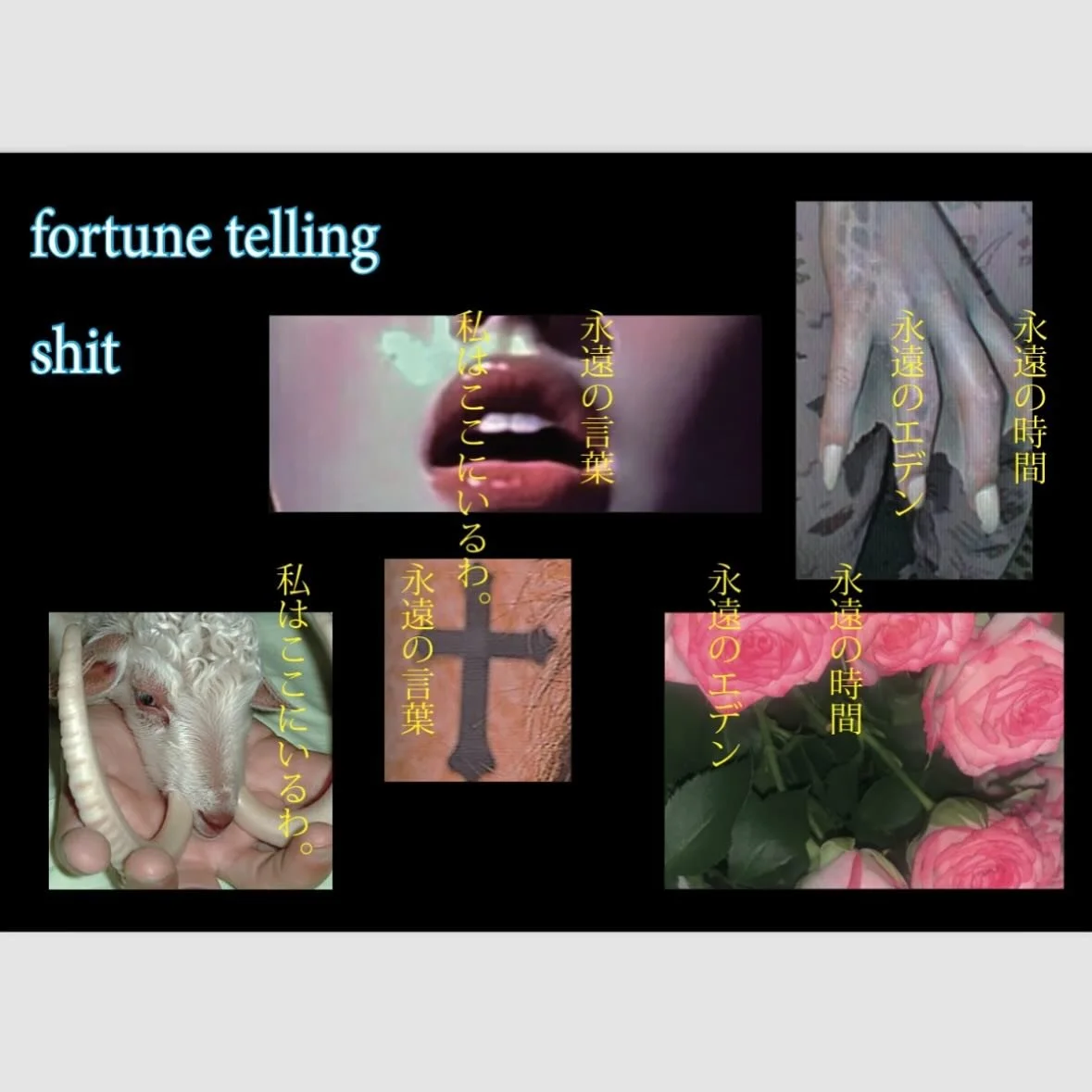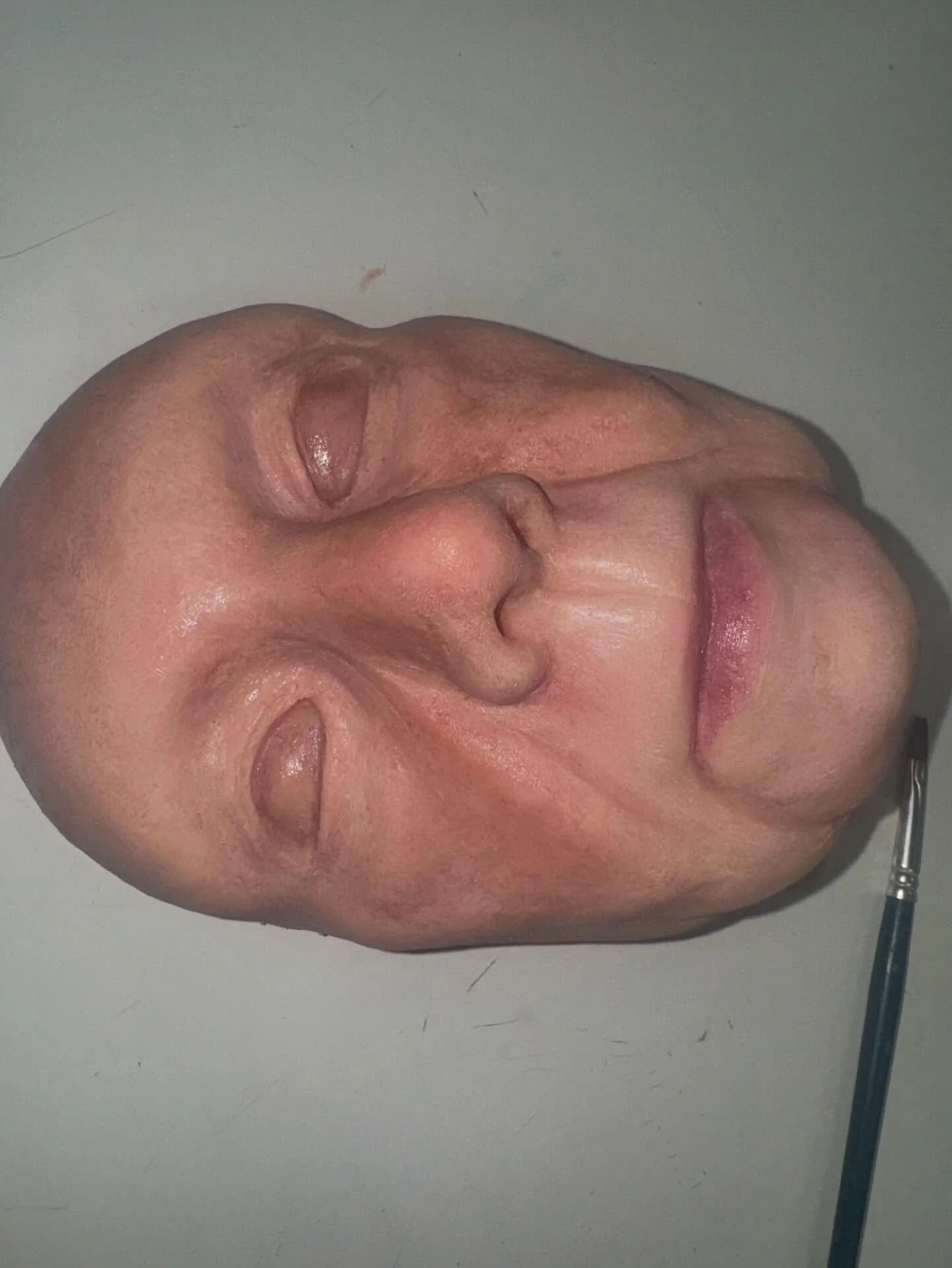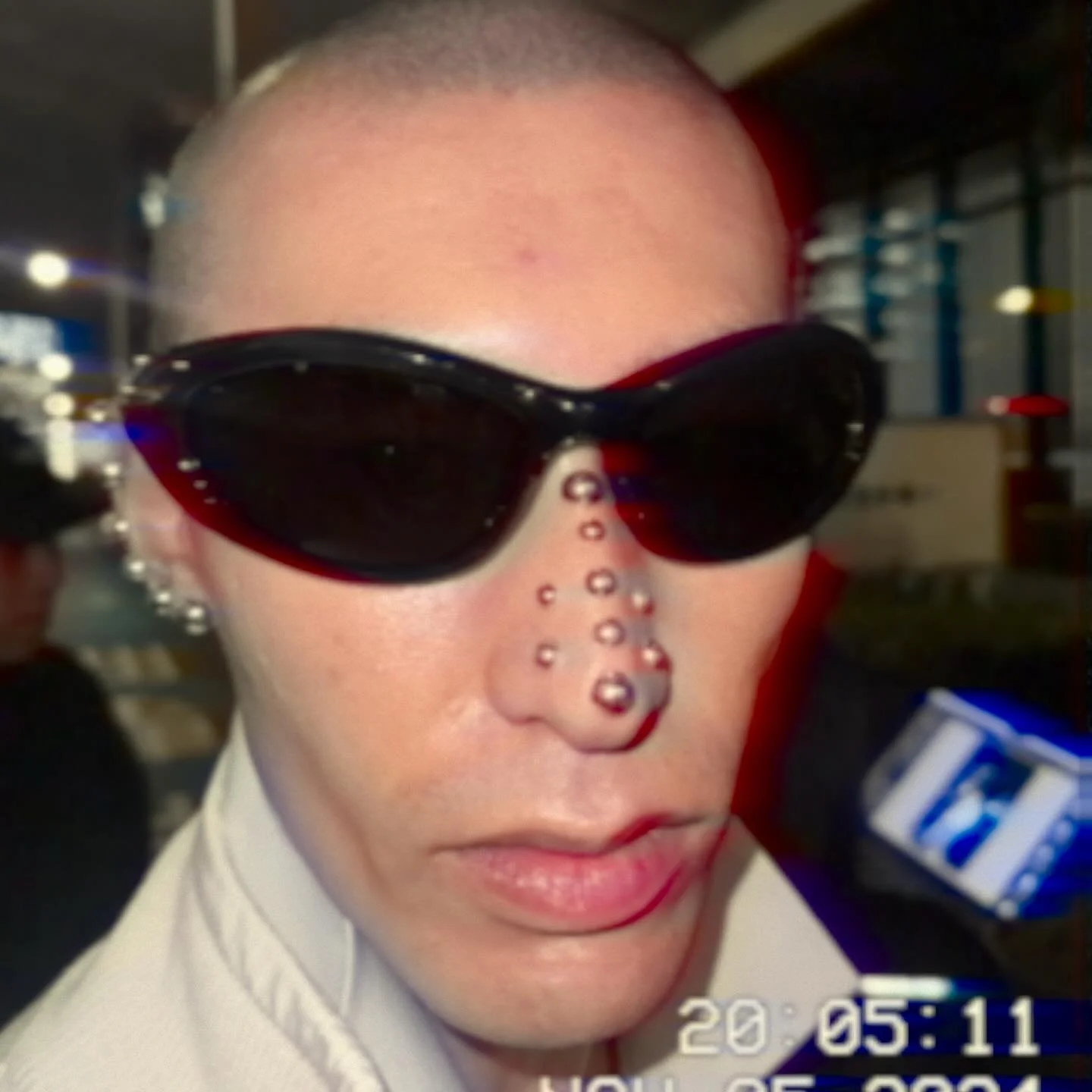Yuka Hirac
Strange is the work and world of Tokyo-based artist Yuka Hirac. Like a dream, her images pull you into another dimension: surreal, overstimulating, and symptomatic of an artificial, digital age. Showing flashes of reality, they strike a balance between the familiar and enigmatic, recognisable yet unsettling. “I try to find something strange and interesting in the real world, and find that delicate balance that makes people imagine something. A hidden story,” the artist describes.
Hirac’s style, which often features distorted faces and bodies, can be traced to her background as a makeup artist. After studying in London and finding commercial success in Tokyo, her present work is less restricted by genre and instead follows the instinctive path of her own fetishes. “Now, I’m making books to record things I like. I’m not only interested in visual aspects but words and stories,” she says. “I want to explore my subconscious and instincts more.”
jajaja… mediation walk is Hirac’s fourth and most recent photobook, released on April 18. “It’s said that when a person dies, they look back on their life like a revolving lantern,” she describes. “I imagined the life I would look back on and realised I laughed a lot. But when I’m laughing with someone, sometimes it’s genuine and sometimes it’s fake…” This mystification bleeds into Hirac’s images, a maximalist kaleidoscope of extreme close-ups, VHS stills, plastic textures and stream of consciousness text.
Using high-contrast colours and flash photography, Hirac’s questions aren’t phrased in words but via visual confusion. With her internet surrealism, she taps into the inexplicable, unnerving parts of the world and self that we don’t, and will likely never, know.
How would you describe your style? Has it changed much over the years?
Surreal, weird, cult, experimental. I try to find something strange and interesting in the real world, and then find that delicate balance that makes people imagine something, editing that has a hidden story. That’s my inspiration for now.
In some ways, my style has changed a lot but also not at all. I started studying makeup in London but the school I went to was a fashion school, so I wouldthink about collections since my friends were designers. I was also into performance art at the time, so that influenced me into liking contemporary things. After that, I graduated and started shooting for magazines. That was high fashion and elegance. When I returned to Japan, I aimed for minimalism because that’s what was “appropriate” and cool.
I’ve changed with the times and my environment. At some point, I lost sight of what I actually liked. Now, I’m making books to record and share [those things], as if to rediscover my own personal likes.
Even though your work spans photography and art now, you started out in make-up. What was it about make-up and beauty that drew you in?
I think the first thing that got me interested in the beauty industry was the hair artist Kamo Katsuya. At the time I was in highschool, around 1996-1998, and I was crazy about fashion. I’d go to the bookstore every day after school to read magazines, and also watch TV programs that reported on collections. The Margiela and UNDERCOVER shows were always so cool. Especially the hair at UNDERCOVER, I was really happy that it was Japanese. So I wanted to work like that and started to dream about it.
You just released your fourth photobook jajaja… mediation walk. Can you tell us a bit more about the story behind it?
jajaja… is a work based on the dream of a revolving lantern one sees after death. It’s said that when a person dies, they look back on their life like a revolving lantern, an image of the process of repeated reincarnation and enlightenment.
I imagined the life that I would look back on when I would die, and superimposed it with what I have seen so far, and also what I would like in the next life. Then, I realised that I’ve laughed a lot throughout my life. But when I’m laughing with someone, sometimes it’s genuine and sometimes it’s fake.
The orange-haired girl who appears in the work is a symbol of my past self, a mixture of the various faces I use to express myself when I’m with someone.
What is it about death, dreams and memories that you find interesting?
I find the unknown and ambiguous to be interesting. What happens when we die? Is there an astral projection? An afterlife? It’s still a mysterious world that’s unknown.
Dreams act as a bridge between the mental world, spiritual world and real world. They’re connected to the subconscious. When it comes to memory, I’ve always thought that the brain is really well-designed. I think remembering and forgetting are instinctive ways to protect us.
““I find the unknown and ambiguous to be interesting. What happens when we die? Is there an astral projection? An afterlife? It’s still a mysterious world that’s unknown.””
In the past, you’ve spoken about valuing your fetishes. What does this mean to you and what kind of things do you find yourself drawn to?
When we live in society, we often get trapped by common sense and what we’ve learned. I haven’t been able to escape it, but I’ve managed to find creative ways to get by.
I feel like my current knowledge, skills and interests are all influenced by trends and information. Of course, that’s a wonderful thing, but lately I’ve been really curious about the actions I take subconsciously, the things I’m drawn to for no apparent reason. Right now I want to explore my subconscious and instincts more. I’m interested in them because they seem like something inherited from a past life.
I think fetishes are at my core. My fetishes are spirals, loops, overlapping things and the impermanence of all things.
““Lately I’ve been really curious about the actions I take subconsciously, the things I’m drawn to for no apparent reason””
Do you have any current hyperfixations?
Words. The Indian goat. The world of the survival of the fittest. Insects. The deep sea.
Finally, what do you think your next life has in store for you?
If I were to be reborn, I would want to be a fish and live my life purely devoted to swimming. If possible, I’d like to be a tripod fish.
Interview by Sharyn Budiarto
What to read next
















